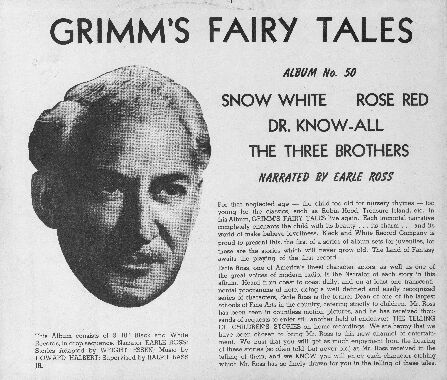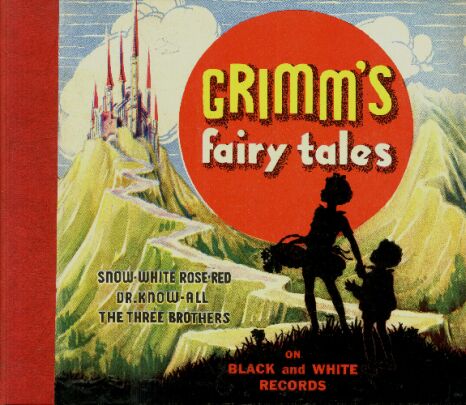THE GILDERSLEEVE CHILDREN'S
RECORDS
I first got
word
that these recordings existed from the great man himself. At the close
of one of the November, 1946 broadcasts, Gildy cut in on the show's
closing
announcements with an announcement of his own — that the second
collection
of his children's story albums had just been released by Capitol
records,
thanks to the overwhelming reception the first album had the previous
year.
Having never
heard
of the records before, I started asking questions over on the Gildy
phorum
and doing some detective work via the net -- quickly discovering there
were actually THREE albums in the series. Some close watching of
auction
sites over several months, along with a bit of judicious bidding,
finally
resulted in the purchase of all three of the original Capitol albums,
which
were released annually from 1945 to 1947.
Here's the
complete
discography for the original albums:
Each 4 record
album
(heavy, fragile 78s in paper sleeves inside a full-color,
hardcover)
had the same name:
STORIES FOR CHILDREN TOLD
IN
HIS OWN WAY BY THE GREAT GILDERSLEEVE
CAPITOL ALBUM CD-11
Release date: Fall, 1945 (?) (On the cover
this is also
referred to as CAPITOL ALBUM J-1, making it the first in the series of
Capitol's albums for children.)
Stories:
Puss
in Boots
Rumpelstiltskin
Jack
and the Beanstalk
|
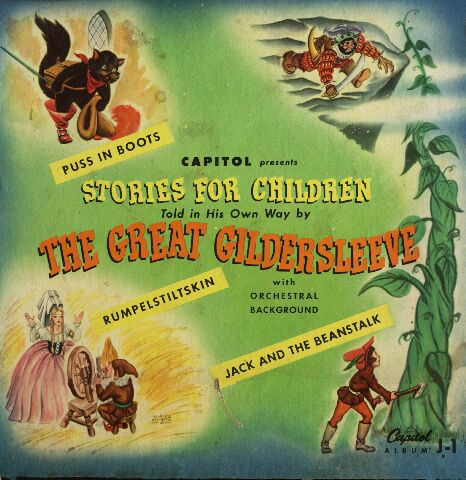 |
CAPITOL ALBUM CD-33
Release date: Fall, 1946
Stories:
Hansel
& Gretel
The
Brave Little Tailor
|
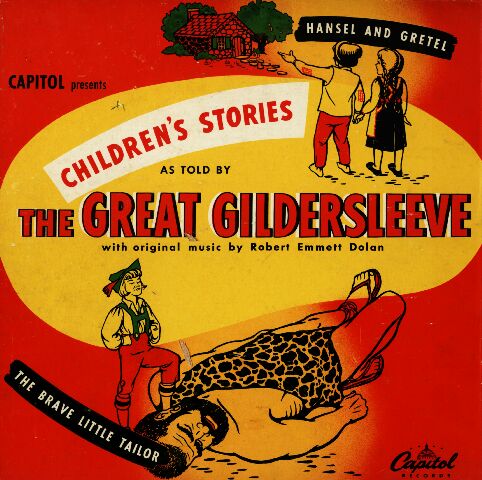 |
CAPITOL ALBUM CD-69
Release date: Fall, 1947
Stories:
Snow
White and Rose Red
Cinderella
|
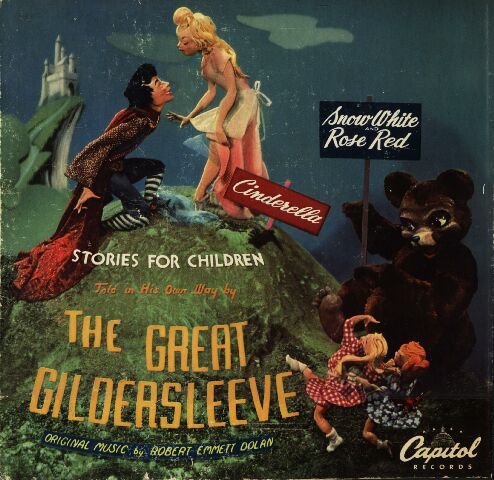 |
All of these
stories
were subsequently re-released as individual records from the late
1940's
through the mid 1960s, as children's 78rpm & 45rpm records.
One of the
nicest
things about these stories is how Peary consistently stays in character
as Gildersleeve as he tells these stories. This is primarily because
Capitol
had the good sense to hire regular Gildersleeve writers John Whedon and
Sam Moore to write the stories for the records. In several of the
stories,
they gave Peary the opportunity to stretch his vocal talents, via his
vocalizations
of old witches, evil giants and bears. They're pretty good, too.
The lovely
music
that accompanies the stories was composed and directed by Robert Emmett
Dolan -- who was musical director on many radio programs in addition to
providing the musical scores for several feature films. The dance song
in Cinderella is an especially fine piece.
—
kylistener
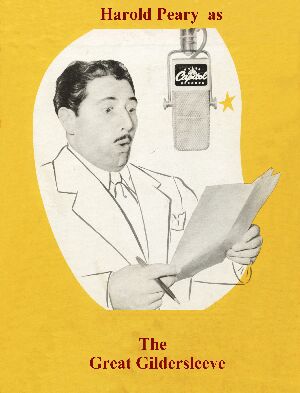
Grimm's Fairy Tales as Read
by
Earle Ross
A generous Gildersleeve Project
supporter,
coincidentally named "Earl", has come forward to share
information
about his collection of Gildersleeve related children's records.
Included are two sets of 78 rpm records of Grimm's Fairy Tales as told
by Earle Ross. There is no date on the records but they
appear
to be of late forties or early fifties vintage. Interestingly,
the
liner notes seem to go out of their way to avoid drawing any connection
between Earl Ross and the Gildersleeve program. It is mentioned
only
indirectly when reference is made to Ross's work on a "popular
transcontinental
program". Nor does Ross tell the stories "in character" as Peary
did on his children's records. Nevertheless, there is no
mistaking
that voice and Ross's telling of these classic tales is quite enjoyable
and entertaining. Also included in Earl's collection is a set of
Andersen's Fairy Tales as told by Earle Ross. These were
apparently
recorded subsequent to the Grimm's Fairy Tales, as the liner notes
refer
to the success of the earlier sets.
Stories from the Brothers
Grimm:
The
Bremen Town Musicians
The
Dragon and his Grandmother
Doctor
Know All
The
Three Brothers
The
Three Feathers
Snow
White and Rose Red
Stories by Hans Christian Andersen:
The Magic Tinderbox
The
Steadfast Tin Soldier




